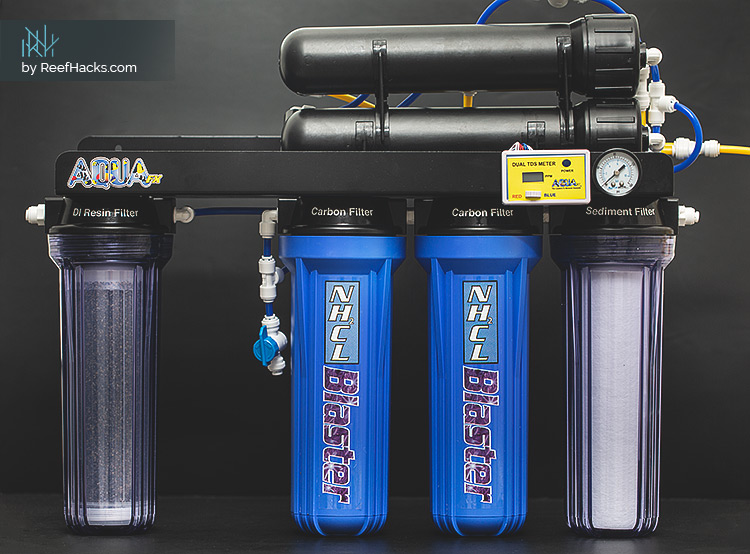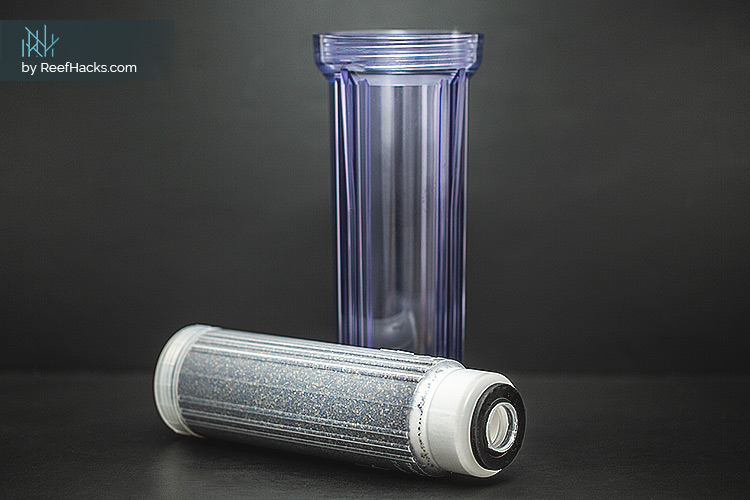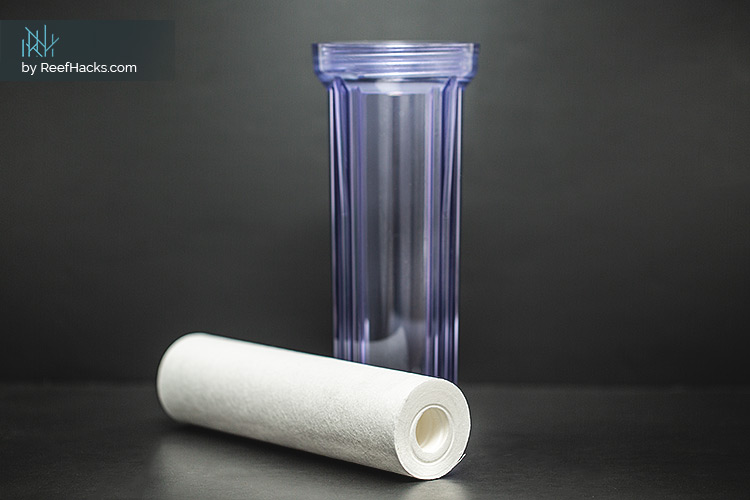Have you visited a reef aquarium store lately? During my most recent visit, I was blown away by the sheer number of products. Seemingly overnight, our beloved hobby has blossomed into one of the most in-demand markets for innovative technologies, and sometimes, ridiculous devices.
Of course, I shouldn’t be surprised. At no other point in the history of reefing have we understood more about the underwater universe. Throughout the last several years, research has unveiled the hidden realm of natural seawater and biological secrets of marine life. While these important discoveries allow aquarists to approach reef keeping in an entirely new way, it’s also opened the floodgates for companies to leverage our excitement for profits.

Author:
As a lifelong aquarist, Yuliya has an endless curiosity about our underwater universe. After graduating with a bachelor’s in Environmental Engineering, she transformed her passion into a successful career. While working at the Institute of Environmental Protection in Moscow, her passion for saltwater and reef aquariums only increased. Moving to the United States in 2013, Yuliya embarked on another impactful journey by sharing her unprecedented experience for all aquarium hobbyists ... Read More.
Now, don’t get me wrong. I’m 100% for the continued development of reefing equipment. What I am against, however, is the unsavory marketing and overinflation of device capabilities.
One of the biggest segments hit by the wave of technological innovation so happens to be one of the most important in terms of tank survival: water quality.
It’s no surprise that the purity and quality of water is paramount for success, but how the average reefer achieves this level of purity is just as interesting as it is confusing. As research into water purification leveraged the preexisting insights of reverse osmosis (RO) filtration technologies, the reefing marketplace suddenly became overrun by RO/DI systems. Nowadays, it’s impossible to walk into any aquarium store or browse an online market without being bombarded by the “latest and greatest” RO/DI water system.
Although not all systems are as miraculous as their marketing wants you to believe, there are some incredibly solid options out there. One of these is the AQUAFx Barracuda Glacial RO/DI System, which delivers everything you’d expect a high-performance water purification system to provide. If you’re searching for a quality system that delivers in both quality and affordability, then you’ll definitely want to investigate this robust RO/DI system.
Don’t worry, this isn’t another bland review that simply recites features from the box. Sure, we’re going to talk about the features, but I like to think of this as a formal introduction. So, dearest reefer, let’s get down to business!
Before moving on, this review covers a specific version of this RO/DI system: The Barracuda Glacial 200 GPD (gallons per day) with the Chloramines Blaster carbon filter. It’s worth noting this version is more expensive than the standard version. So, why did we choose these specific upgrades? We’ll get to that momentarily, but first, let’s explore exactly who AQUAFx is, and why they’ve become a major player in the reef tank RO/DI system game.
AQUAFx - Insights of Passion and Innovation.
Do you wish you could use the same equipment as some of the world’s leading zoo’s? How about leveraging the exact same technology as NASA and a myriad of university research departments? Well, my dear reefer, you can!
AQUAFx isn’t just any supplier. In many ways, they’re THE supplier of quality RO/DI systems. Based in the United States, this company proudly serves some of the biggest aquarium customers in the United States. Headquartered in Winter Park, Florida, AQUAFx has an impressive customer base, which includes such universities as Texas A&M, University of California, University of Miami, City University of New York and Purdue University, just to name a few.
There’s a big reason why institutions like The Smithsonian and NASA (yes, the space agency) call upon AQUAFx to supply their RO/DI systems, and that reason is innovative technologies.
Founded by Marianne Brizio, and hosting an impressive leadership board, AQUAFx is an excellent example of a company who integrates the strengths of all employees. Marianne, for example, holds a Bachelor’s of Science in Environmental Engineering, while her son Pete features a BS in Civil Engineering. Combined with the over 45 years of high-level experience by leadership members, which include Doug Mott and Jeromy Plesha, AQUAFx is capable of producing some of the finest quality water treatment systems in the industry.
Before moving on, I want to highlight the fact that all parts of their RO/DI systems are made in America. If you’ve ever tried your luck with a cheaper overseas system, then you understand the value behind that statement. If you don’t, well, let me save you hundreds of dollars and countless hours of frustration: where equipment is made is just as important as how it operates.

Setting the Stage - Barracuda Glacial Filtration Review.
While it’s easy to be swept away with the overall features and capabilities of the Barracuda Glacial system, let’s not forget its ultimate purpose: treating water. Before getting into its other functions, let’s start with the most important component - filtering stages.
In case you aren’t already familiar with the concept of reverse osmosis, it’s essentially the reverse process of osmosis. In short, osmosis is a natural phenomenon where lower saline water gravitates toward higher saline content water. By reversing this natural migration, and forcing water through a filtering membrane, impurities are extracted at the molecular level.
When it comes to your reef tank, this means literally transforming the chemistry in tap water. In a surprisingly short amount of time, harmful chemicals and compounds are stripped away, which reduces the risk of exposing your delicate aquarium to the ravages of tap water.
The DI in this system refers to Deionization, which essentially means the ionic properties of water transition. This action helps strip water from specific nutrients and compounds at the atomic level, which as you can imagine, results in strikingly pure water.
So, what makes the Barracuda Glacial RO/DI system different from its many competitors? The answer rests in its 4 stage treatment process. Here’s a brief overview of each stage:


- Stage One (Sediment Filter) - The initial filtering process is known as Stage 1, and actively works to extract larger particles, such as sand and sediment. The lifespan of the filter depends on two factors: GPD (gallons per day) rate and particulate count. Basically, the more water that travels through the filter, and the more particles it filters, can greatly influence its duration. Knowing when to change the filter is relatively easy. The first sign is a decrease in PSIG, and the second is water discoloration.
- Stage Two (Varies) - Next, water enters filters explicitly designed to minimize the concentration of Volatile Organic Compounds, or VOCs. AQUAFx offers three options
- Carbon Block - Eliminates chlorine and VOCs via micron activated carbon, which literally absorbs impurities.
- GAC - Refers to Granulated Activated Carbon, which performs similar impurity absorption as the carbon block, but instead of a solid piece of carbon, it’s distributed throughout the canister in granulated form.
- Chloramine Blaster - This is what we use in our system because our local water municipality adds chloramine, which is chlorine mixed with ammonia, known as chloramine. While the carbon block absorbs chlorine, it leaves behind ammonia. This filter actively removes both chlorine and ammonia due to its use of catalytic carbon. Check with your water municipality to see if the Chloramine Blaster is your ideal option.
- Stage Three (RO Membrane) - Passing through the RO membrane is the initial stage when it comes to filtering out Total Dissolved Solids, also known as TDS, which may include salts and calcium. In a way, this stage is the heart of any RO system, and when used properly, can eliminate up to 90 percent of TDS. Keep in mind, this membrane is VERY sensitive to chlorine. If your carbon/chloramine filter goes bad, you risk ruining an otherwise functional membrane.
- Stage Four (Deionization Filter) - Lastly, water enters the DI filter to extract any remaining salts, or harmful ions. The filter consists of two resins, which are charged with either a Hydrogen (H+) ion or a Hydroxide (OH-) ion. Pay attention to the resin color. When it start to change into a red/orange hue, it’s time for it to be replaced.
It’s important to note that there are several problems capable of reducing filter efficiency. Perhaps one of the most common issues relates to low water pressure. Incoming water must be at least 40 PSI or greater to properly send water through each filtration stage. If you notice your TDS count remains high after installing a new membrane, be sure to confirm the pre-filters aren’t clogged. Remember, if installed correctly, an RO membrane should last anywhere from two to three years.
Revolutionizing RO/DI System Ease - Noteworthy Remarks.
Even though the filtering stages of any RO/DI system are the most important qualities to ensure satisfaction, it’s not everything. What I truly appreciate about the AQUAFx Barracuda Glacier is its construction and accessories. Installation is relatively straightforward, but be sure to install this, or any RO/DI system, on the ground floor of your home (if possible). Although this system offers automatic emergency shutoff (float valve), this safety feature isn’t always enough to prevent overflows and leaks.
Minimize the risk of leaks and improper functionality by carefully installing and securing the system. But, just in case, install in an area of your home that isn’t susceptible to water damage.
Readout measurements are beyond important. Essentially, these gauges and meters are how the RO/DI system communicates. If either display fails to provide an accurate readout, it’s possible to incorrectly setup its entire operation. It doesn’t take a scientist to understand the implications of an ill-configured water treatment system. Thankfully, the Barracuda Glacier offers not only an easy-to-understand pressure gauge and inline TDS meter, but its construction helps support continued accuracy.
Impossibly Pure Water That’s Impossibly Easy to Use - Final Thoughts.
From its efficient operation to its unparalleled construction, the AQUAFx Barracuda Glacier RO/DI system is definitely worth checking out. If you’ve never owned or operated this type of water treatment system, then you’ll appreciate its robust simplicity. Even complete novices can feel comfortable after a very small learning-curve. While there’s so much more to say about this RO/DI system, I think it’s best to leave a few happy surprises in my reviews.
What’s your experience with reverse osmosis water treatment? Have you used a system like this in the past, maybe even the original Barracuda? Head on over to our Facebook Page and let us know your thoughts or questions! As always, Happy Reefing!
by Yuliya Ivanova for ReefHacks.







